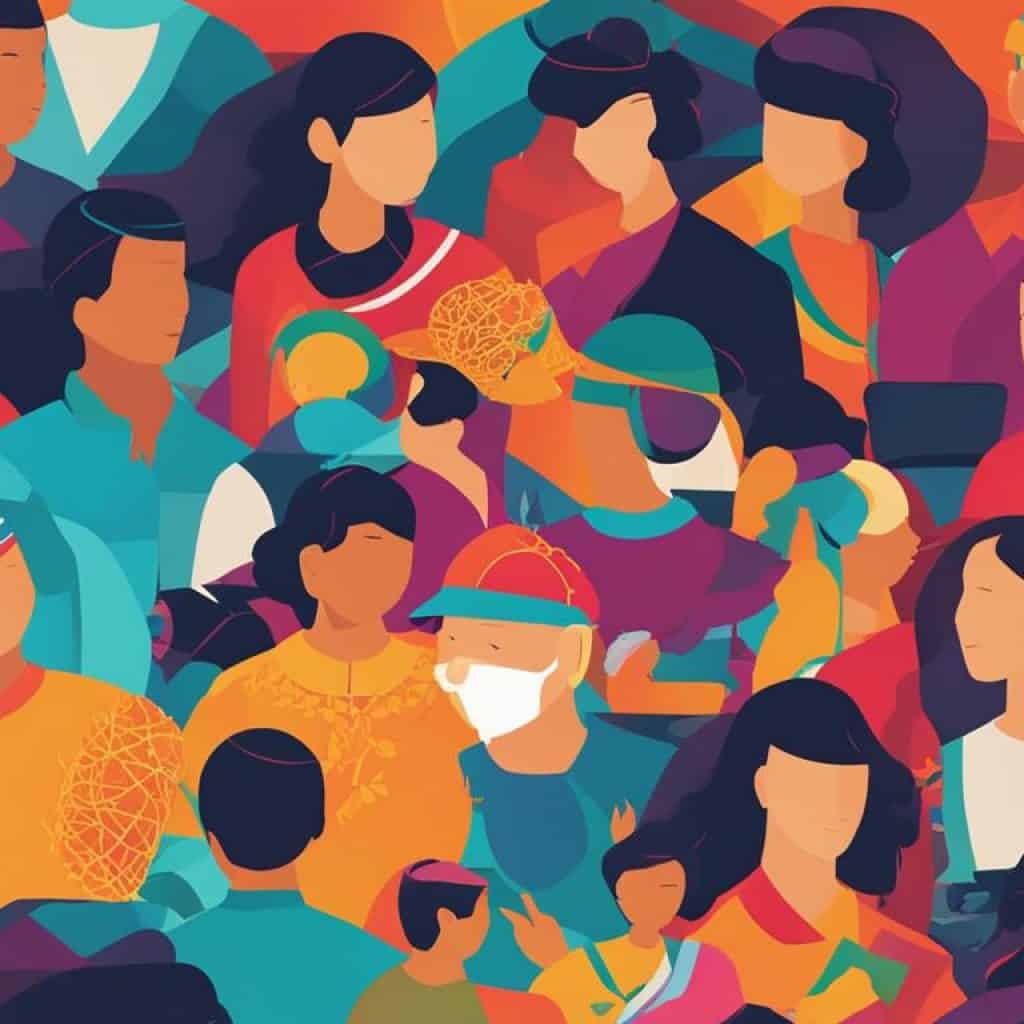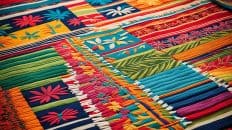Have you ever wondered about Tagalog and its significance in Filipino culture? Maybe you want to learn Tagalog but don’t know how to start. This guide will explore Tagalog’s captivating world, including its history and role in Filipino society. You’ll also discover ways to interact with the language and culture.
Key Takeaways:
- Tagalog is a language from the Malayo-Polynesian Branch in the Austronesian language family, spoken by over half of the population of the Philippines.
- Learning Tagalog is essential for understanding Filipino culture, history, and engaging with the local community.
- Tagalog has a rich history influenced by Spanish occupation, and nearly half of its words are derived from Spanish.
- There are various resources and courses available to learn Tagalog, making it accessible for beginners.
- Familiarizing yourself with common Tagalog phrases can greatly enhance your travels in the Philippines.
The Importance of Learning Tagalog in the Philippines
English is common in the Philippines, but learning Tagalog is key for talking with many Filipinos. Around one-fourth of the population speaks Tagalog as their first language. People not raised speaking English might not know it well. The Philippines has many languages and dialects. This makes learning Tagalog important, especially for travelers and those wanting to get into Filipino culture.
Talking in Tagalog lets you connect more deeply with locals. It shows respect for their culture and helps in talking to more people. Also, Tagalog helps in understanding Filipino history, traditions, and customs.
“Learning Tagalog opens doors to meaningful cultural exchanges and demonstrates a genuine interest in connecting with the Filipino community.”
Learning Tagalog is great for chatting, shopping in local markets, or diving into Filipino heritage. English is useful, but Tagalog breaks down barriers. It helps make real connections, so you can enjoy Filipino hospitality fully.
Benefits of Learning Tagalog in the Philippines
Here are some key benefits of learning Tagalog in the Philippines:
- Enhanced communication with native speakers
- Deeper understanding and appreciation of Filipino culture
- Expanded opportunities for cultural immersion
- Access to a wider range of experiences and interactions
- Increased respect and recognition within the local community
Learning Tagalog enriches relationships, broadens views, and helps you engage more with the Philippines’ culture.
The History and Influence of Tagalog
The Philippines has a rich history, touched by many foreign rules. These have greatly influenced Tagalog and the Filipino language as a whole.
The Spanish were in the Philippines for over 300 years. During their time, they made Spanish the official language. This deeply affected Tagalog, adding many Spanish words to it. The influence of Spanish has really shaped the country’s language landscape.
“The Spanish occupation played a crucial role in shaping the vocabulary of Tagalog, leaving a lasting imprint on the language and its cultural identity.” – Dr. Maria Dela Cruz, Linguistics Historian
Words like *kamote* (sweet potato), *bintana* (window), and *libro* (book) came from Spanish. They are now common in Tagalog talks. This shows the deep exchange between the Philippines and Spain’s cultures.
After Spain, the United States controlled the Philippines for almost 50 years. They made English the main language, affecting Tagalog too.
This mixing of Spanish and English led to a special blend called **Taglish**. Taglish mixes Tagalog and English in casual talks and pop culture.
Foreign influences have greatly molded Tagalog’s growth and evolution. They’ve added to its vocabulary and shaped its cultural identity. Tagalog stands as a key part of the Filipino heritage and identity today.
Learning Tagalog: Tips and Resources
At first, learning Tagalog might look tough. Yet, it’s pretty easy for starters. This language uses the Latin alphabet. This makes reading and saying words direct. Plus, there are no silent letters in Tagalog, which simplifies things even further. For those wanting to grow their skills, there’s plenty of help to master Tagalog.
Language Courses
Language courses are a solid way to learn Tagalog. Various institutes and educational centers offer courses for all skill levels. These lessons come with expert advice helping you build a good base in Tagalog. You’ll learn vocabulary, grammar, and phrases. You can also get to know the culture better through some of these courses.
Online Platforms
Online platforms work great for those liking a flexible schedule. Sites like Glossika have in-depth Tagalog courses for all learners. These platforms include interactive stuff like audio clips, lists of words, and grammar drills. They help you listen better, grow your word bank, and polish your pronunciation.
“Learning a new language is like exploring a new culture. Embrace the journey and embrace Tagalog!”
Tagalog Vocabulary and Phrase Books
Getting a vocabulary or phrase book is smart when learning Tagalog. These books list key words and phrases you’d use daily. They have English translations too, making it easier in different situations. Like saying hello, ordering food, or finding places. Many books also offer pronunciation tips to sound more natural.
| Resource | Description |
|---|---|
| The Filipino Phrase Book | A comprehensive guide to basic and essential Tagalog phrases, suitable for beginners. |
| Conversational Tagalog | A phrase book that focuses on conversational Tagalog, perfect for travelers and language enthusiasts. |
Language Exchange Programs
Language exchange programs are great for practicing with native speakers. They pair learners with natives who wish to learn other languages. Talking with natives helps apply your Tagalog in real-life settings. This boosts your speaking skills and cultural insight.
To master a new language, stay consistent and practice a lot. Set regular study times, chat with native speakers, and dive into the culture. Enjoy discovering the beauty of Tagalog and the fun in learning it.
Common Tagalog Phrases for Travel
Going to the Philippines? Learn some Tagalog phrases to enrich your trip. They’re handy in cities and islands alike. You can connect better with locals. Here are vital phrases for your journey:
Greetings
- Kumusta – Hello/How are you?
- Salamat – Thank you
- Magandang umaga/hapon/gabi – Good morning/afternoon/evening
- Paki-explain – Can you please explain?
Introductions
- Ako si [name] – I am [name]
- Paumanhin, hindi ako nagsasalita ng Tagalog – Sorry, I don’t speak Tagalog
- Saan ang banyo? – Where is the bathroom?
- Mayroon ba kayong English menu? – Do you have an English menu?
Survival Phrases
- Tulong – Help!
- May allergic reaction ako – I have an allergic reaction
- Mayroon ba kayong WiFi dito? – Do you have WiFi here?
- Gusto ko po ito – I would like this, please
“Learning a few basic Tagalog phrases can go a long way in bridging connections with the warm and friendly people of the Philippines.”
Even if you’re new to Tagalog, locals will appreciate your effort. Don’t hesitate to use these phrases. Dive into the Philippine culture.
The Significance of Tagalog in Filipino Culture
Tagalog is the national language of the Philippines. It is very important in Filipino culture and heritage. It helps bring together different communities across the islands, making it a key part of Filipino identity.
Learning Tagalog helps in understanding the rich history, traditions, and cultural details of the Filipino people.
Tagalog has been essential in Filipino literature and arts throughout history. Filipino authors use Tagalog to share their thoughts, feelings, and stories. This has created a colorful and varied literary scene.
Traditional arts like music, dance, and visual arts often include Tagalog elements. This shows the strong link between the language and culture.

Tagalog culture is deeply intertwined with the language itself. Customs and traditions are shared from one generation to the next through oral storytelling, songs, and poetry. Every region in the Philippines has unique cultural practices. Tagalog acts as a common thread, linking these diverse traditions. It is used in fiestas, traditional celebrations, religious rituals, and social interactions. This creates unity and a shared heritage.
Tagalog also plays a key role in preserving Filipino history. It is used to record and share historical events. This ensures that the stories of the past are remembered.
Tagalog texts and documents provide valuable insights. They tell us about the struggles, victories, and changes of the Filipino people. This helps us understand the country’s heritage better.
To truly appreciate Tagalog culture, one must dive into the customs, traditions, and values of the Filipino people. Getting involved with the local community, taking part in cultural events, and visiting historical sites can lead to a deep appreciation of Tagalog. It shows its importance in Filipino society.
In conclusion, Tagalog is more than just a language. It is a window to understand Filipino culture, traditions, and history. Tagalog unites people and helps keep the history of the Filipino people alive.
Exploring the Diversity of Languages in the Philippines
The Philippines is famous for its amazing number of languages. Over 120-175 languages are spoken here, showing the nation’s rich culture. Tagalog is the national language, but there are many other languages and dialects.
Besides Tagalog, important languages include Visayan, Ilocano, and Kapampangan. Each part of the Philippines has its unique dialect. This showcases the various cultural backgrounds and influences in the country.
To truly understand the Philippines, knowing about its languages is key. It helps connect deeply with the people, whether you’re visiting or just love languages. Discovering these languages and dialects opens up new cultural insights.
“Language is the road map of a culture. It tells you where its people come from and where they are going.” – Rita Mae Brown
Regional Languages in the Philippines
The Philippines is home to many regional languages too. Each regional language is unique, with its own words and style. These languages vary by province and island, such as:
- Ilonggo/Hiligaynon (Visayas and Panay Islands)
- Bicolano (Bicol Region)
- Pangasinense (Pangasinan and neighboring provinces)
- Waray-Waray (Eastern Visayas)
- Cebuano (Cebu and other parts of Visayas and Mindanao)
- Tausug (Mindanao)
These regional languages keep local cultures alive. They are shared within families and communities, forming a vital part of regional heritage.
Linguistic Diversity and Cultural Enrichment
The many languages of the Philippines show its history and geography. They offer a way to explore the country’s rich culture. Each language brings its own traditions and stories, adding to the Filipino cultural mosaic.
For anyone interested in language or culture, embracing this diversity enriches your understanding. It allows a greater appreciation of the Filipino people and their lifestyle.
“The limits of my language are the limits of my world.” – Ludwig Wittgenstein
The Role of Tagalog in National Identity
Tagalog holds a key role in shaping the Filipino identity. It symbolizes unity and shared values. In education and media, Tagalog boosts pride and belonging for Filipinos everywhere.
As a nation’s voice, Tagalog is vital to Filipino identity. It’s more than just for talking; it’s our culture and unity. It’s used in schools, government, and official papers, making us feel connected.
Tagalog is a big part of life in the Philippines, showing our country’s history and culture. By using Tagalog, we show our pride and understand our past. It brings us together, celebrating our culture.
“Tagalog connects us as a nation. It brings together Filipinos of different regions and dialects. Tagalog is our history, values, and spirit,” says Dr. Maria Santos, a language expert.
Tagalog is also important for Filipinos around the world. It keeps our culture alive and passes it to our kids. It’s a bond for Filipinos globally, filling us with pride and connection to our roots.
Tagalog is celebrated in arts like literature, music, and film. Our stories and songs, in Tagalog, share our experiences and dreams. They spread Filipino pride through our culture’s expressions.
Tagalog as an Agent of Unity
Tagalog unites the Philippines. It bridges differences between our many languages. This lets us connect, work together, and share ideas, no matter where we’re from.
Tagalog helps us celebrate together – during national holidays, cultural events, and everyday talks. It brings us closer and makes us feel part of one big family.
Tagalog as a Source of Filipino Pride
Filipinos are proud of Tagalog, our national language. It shows our culture’s strength, creativity, and flexibility. By using Tagalog, we celebrate our language and stand out worldwide.
In conversations, songs, or stories, Tagalog reflects our spirit. It proves our toughness, togetherness, and pride in who we are.
Tagalog Literature and Arts
Tagalog literature is a key part of the Philippines’ culture. Filipino authors have added much to global literature, offering unique works. These works reveal the Filipino identity and a wide range of human experiences. From novels to poems, Tagalog literature expresses emotions, traditions, and stories. These are the core of Filipino culture.
Exploring Tagalog Poetry
Tagalog poetry is known for its lyrical beauty and deep meanings. Poets find inspiration in nature, love, spirituality, and social issues. They share their thoughts in eloquent verses. Jose Corazon de Jesus, Francisco Balagtas, and Amelia Lapeña-Bonifacio are important poets in this tradition.
Noteworthy Filipino Authors
Many Filipino authors have left a mark on literature with their talent and creativity. Jose Rizal, Nick Joaquin, and F. Sionil Jose stand out. They wrote engaging stories about Filipino society, history, and values. Their stories inspire readers and show the strength of storytelling.
Tagalog literature also includes novels, short stories, plays, and essays. These cover many themes and views, offering deep insights into Filipino life.
Traditional Arts in the Philippines
The Philippines’ traditional arts are a big part of its culture and language. Music, dance, visual arts, and crafts display Filipino creativity and heritage. Kundiman and Harana music, for example, stir emotions and tell stories with poetic lyrics and tunes.
Dances like Tinikling and Singkil use graceful moves and colorful costumes to share Philippine history, myths, and everyday life. In painting, sculpture, and weaving, Filipino artists show their skill and artistic side.
Tagalog in Everyday Life
Tagalog plays a big role in the daily life of the Philippines. It’s used in both casual talks and formal dealings. Knowing Tagalog phrases helps you connect with locals easily.
Using Tagalog can make your time in the Philippines richer. You’ll navigate markets, order food, and chat with locals more smoothly. This immersion brings you closer to Filipino culture and people.
Tagalog Phrases for Everyday Conversations
Here are several Tagalog phrases for your daily use:
Magandang umaga! – Good morning!
Kumusta ka? – How are you?
Salamat – Thank you
Paumanhin po – Excuse me
Mahal kita – I love you
Gutom na ako – I’m hungry
Magkano ito? – How much is this?
Tara na! – Let’s go!
By using these phrases, you’ll connect better with Filipinos. Speaking Tagalog shows respect for their language and culture.
| Benefits of Using Tagalog in Everyday Life: |
|---|
|
Speaking Tagalog lets you dive into the Philippines’ colorful culture fully. It enriches your travels, from exploring history to tasting local dishes. Your journey becomes more memorable by talking with locals.
Tagalog in the Digital Age
In the digital world, Tagalog fits right in. It has found a place on tech and social media, aimed at Filipinos. Different websites and social media accounts offer content in Tagalog. This helps people feel part of a community. Also, the mix of Tagalog and English, called Taglish, is popular online. It shows how flexible the Filipino language is.
The digital world helps promote Tagalog. It opens doors for keeping the language and culture alive. The internet proves Tagalog’s importance and connects people who speak it.
Tagalog websites have grown, offering valuable info for Filipinos. They range from news to educational content. These sites meet the varied interests of Tagalog speakers. They keep Filipinos updated on technology, entertainment, and more.

Social media is key for sharing in Tagalog. Millions of Filipinos use Facebook, Twitter, and Instagram. These platforms support Tagalog. This helps strengthen cultural bonds online.
Taglish showcases the language’s flexibility. It blends Tagalog and English. This mix fits well with different language skills. It creates a special way of communicating online.
Tech has transformed Tagalog’s use. Websites and social media spotlight Tagalog. The rise of Taglish has also been significant. As digital tools grow, Tagalog’s role in culture remains strong. It keeps adapting, staying relevant in Filipino life.
Tagalog as a Bridge to Filipino Cuisine
Tagalog, spoken by over half the Filipino population, links closely to Filipino cuisine. It’s rich in diverse culinary vocabulary derived from the Tagalog language. Knowing these food terms makes exploring Filipino dishes more fun and meaningful.
Learning Tagalog helps you appreciate Filipino flavors and culture deeply. It lets you understand the language used for dishes, ingredients, and cooking techniques. This connection deepens your culinary journey into Filipino gastronomy.
Looking to taste adobo, sinigang, pancit, or balut? Want to explore tropical fruits and native ingredients of the Philippines? Knowing Tagalog food terms guides you through Filipino cuisine’s vibrant world.
“To truly understand Filipino cuisine, one must not only indulge in its flavors but also embrace the language that brings it to life.”
Tagalog food terms reveal traditional practices and flavors of the Philippines. Terms like bagoong (fermented shrimp paste) and calamansi (a small citrus fruit) show the unique culinary traditions.
Tagalog sheds light on the Philippines’ cultural heritage and regional dishes. Every region offers special dishes with unique flavors. These are described using Tagalog terms.
For instance, lechon is called “litson” or “litson baboy” in Tagalog. “Kakanin” refers to sticky rice desserts. Knowing these terms provides insights into the culture and history of Filipino dishes.
The table below showcases a selection of commonly used Tagalog food terms:
| Tagalog Food Term | English Translation |
|---|---|
| Adobo | Braised meat dish |
| Sinigang | Sour soup |
| Pancit | Noodle dish |
| Lechon | Roasted pig |
| Ube | Purple yam |
| Mangga | Mango |
Table: Selected Tagalog Food Terms
Using Tagalog food terms, explore the unique world of Filipino cuisine. Embracing Tagalog as a culinary bridge deepens your understanding of the Philippines’ rich food heritage.
Embrace the Flavors of the Philippines
The vibrant flavors of Filipino cuisine are waiting for you. With Tagalog as your guide, you can explore Filipino dishes deeply. You will understand the importance of native ingredients. And, you’ll enjoy the cultural richness that Filipino gastronomy offers. So, dive into the flavors of the Philippines, one Tagalog food term at a time.
Learning Tagalog for Business and Travel
Learning Tagalog is very useful for both business and travel. It lets you connect better in the Philippines, for work or fun. Understanding Tagalog lets you talk more deeply with Filipinos.
For business folks, knowing Tagalog makes relationships stronger with Filipino partners and clients. It shows you care about their culture. This helps in building trust. Speaking Tagalog makes business talks smoother and shows respect to the Filipino market.
Traveling in the Philippines gets better with Tagalog. While many speak English, knowing the local language helps outside tourist spots. It lets you go places easily, chat more with locals, and enjoy Filipino culture.
Knowing Tagalog lets you see the local way of life. You can enjoy the diversity, history, and culture better. You can order food and shop locally, connecting personally with Filipinos.
Benefits of Learning Tagalog for Business and Travel
“Having the ability to communicate in Tagalog opens doors to new opportunities for business growth and cultural exchanges.”
| Tagalog for Business | Tagalog for Travel |
|---|---|
|
|
By learning Tagalog, you gain a skill that brings new chances and experiences. It enriches business ventures and travel adventures. Speaking Tagalog lets you fully enjoy Filipino language and culture.
Tagalog Resources and Courses
If you want to learn Tagalog, there are many resources and courses for you. These tools help you get a deep understanding of Tagalog words, grammar, and how to pronounce them.
Textbooks and Online Lessons
Textbooks and online lessons are popular ways to learn Tagalog. They cover important parts of the language like vocabulary, grammar, and making sentences. For beginners, “Tagalog for Beginners” by Joi Barrios is good. Another choice is “Conversational Tagalog” by Teresita V. Ramos.
Language Exchange Programs
Language exchange programs let you practice Tagalog with native speakers. Sites like Tandem and HelloTalk connect you with people who also want to learn. You can have real conversations, practice how words sound, and get feedback.
Online Platforms and Apps
Nowadays, many people use online platforms and apps to learn Tagalog. Glossika, for example, offers Tagalog courses for all levels. These help you listen better, learn more words, and understand grammar through fun exercises.
Tagalog Language Institutes
For an immersive experience, consider joining a Tagalog language institute. These places have courses taught by skilled teachers. They dive deep into the language and its culture. You might even get to experience the culture first-hand.
Community-based Classes
Community centers and language schools sometimes have Tagalog courses. These classes offer a friendly space to learn and you can meet other students. They are great if you like learning in a classroom with a teacher.
There are so many ways to learn Tagalog now. You can choose what works best for your style and level. By diving into the language with these tools, you’ll soon be able to speak Tagalog with confidence.
Embracing the Tagalog Language and Culture
Learning Tagalog is more than just the language. It’s about diving into the Filipino way of life. You get to understand their rich culture by immersing yourself in their traditions and values.
One way to dive in is by connecting with locals. When you talk with native speakers, you not only get better at the language. You also learn unique customs and traditions of Filipino culture.
“Embracing the Tagalog language and culture is like opening a door to a world of knowledge and understanding.”
Going to cultural festivals is another great way to learn. Events like the Sinulog Festival in Cebu or the Pahiyas Festival in Lucban show you Filipino traditions. They give you a peek into the culture through music, dance, and food.
Visiting historical places in the Philippines is also key. Places like Intramuros in Manila or the Banaue Rice Terraces in Ifugao show the history and heritage. These visits help you connect more deeply with the culture of the Philippines.
When you embrace Tagalog culture and language, you start a journey of exploration. It’s a chance to really bond with Filipino people. This deep connection expands your cultural understanding.
| Benefits of Embracing Tagalog Language and Culture | How to Embrace Tagalog Language and Culture |
|---|---|
|
|
Embarking on this journey with Tagalog culture is rewarding. It brings a deeper appreciation for the Filipino way of life. By learning the language and immersing in the culture, you connect with the heart of Tagalog culture.
Conclusion
Learning Tagalog is more than just gaining new language skills. It’s a deep dive into Filipino culture, history, and identity. As the Philippines’ national language, Tagalog unites diverse communities. It lets you access vast knowledge and appreciate Filipino traditions deeply.
By learning Tagalog, you unlock Filipino literature, arts, and food secrets. It helps you understand Filipino customs and talk with locals effortlessly. Whether visiting the Philippines or working with Filipino partners, Tagalog knowledge opens new doors. It makes your experience richer.
Dive into the beauty of Filipino language and culture. See Tagalog as a key to exploration, enriching your connection to Filipino life. Begin your journey today. Discover the wonders hidden in the heart of Tagalog.







Add comment